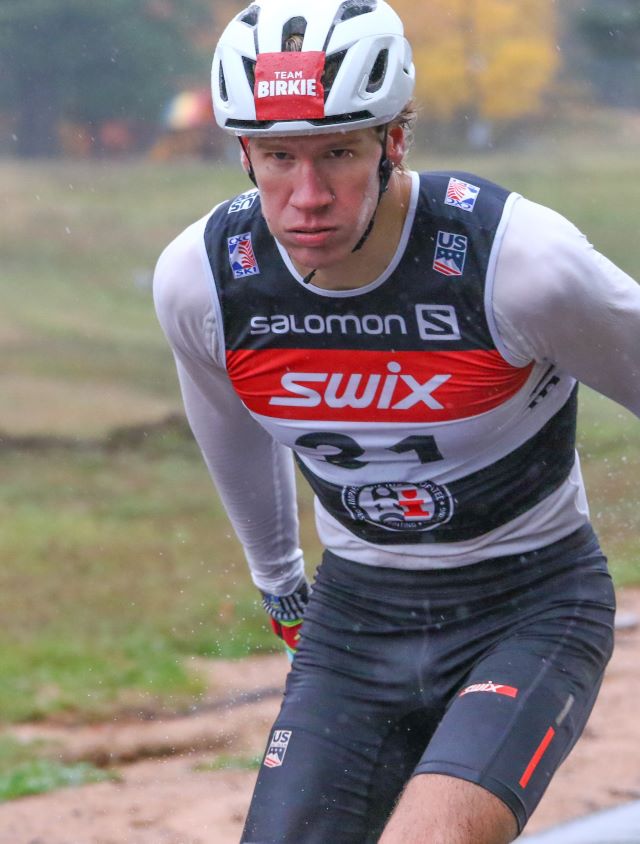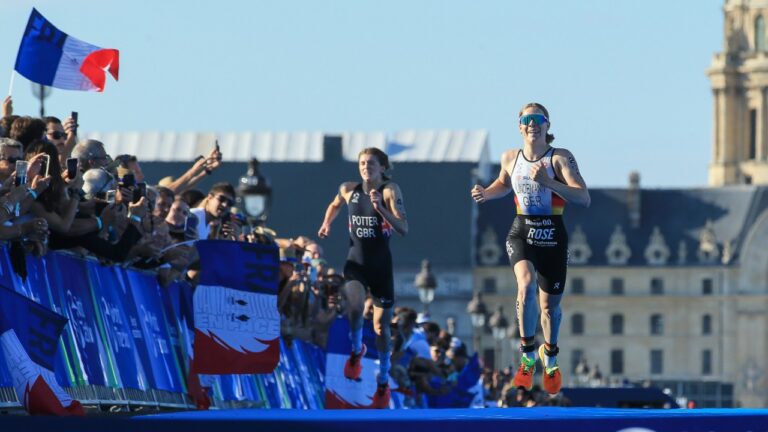Are you intrigued by the world of triathlons but unsure about the events that constitute this ultimate test of endurance and skill? Well, you’ve come to the right place! In this blog, we dive deep into the thrilling realm of triathlons, focusing on the fundamental question: what events are in a triathlon?
From the adrenaline-pumping swim leg to the challenging bike course and culminating in the grueling run segment, triathlons encompass a variety of disciplines that push athletes to their limits. Join us as we explore each component in detail, shedding light on the unique demands and strategies involved in conquering a triathlon.
Introduction: Exploring the World of Triathlons
Triathlons are exhilarating and demanding multi-sport events that test the limits of athletes’ endurance and strength. They consist of three main disciplines – swimming, cycling, and running. Participants push themselves to the edge, showcasing their athleticism across various terrains and conditions.
The Swim Leg
The first leg of a triathlon is the swim, where competitors dive into open water or pool to cover a specific distance. Swimmers must navigate through waves or currents, showcasing their agility and speed. This segment challenges athletes to maintain their form and stamina in the water.
The Bike Leg
Following the swim, participants transition to the cycling phase. They mount their bikes and cover a designated course, negotiating hills, descents, and flat stretches. Cyclists must balance speed with endurance, strategizing to conserve energy for the upcoming run.
The cycling leg often offers a visual treat of scenic routes and challenging paths, adding another dimension of excitement to the triathlon experience.
The Run Leg
As the final stage, the run leg tests athletes’ resilience and determination. Participants embark on a foot race, pushing their bodies to the limit after the swim and bike segments. Endurance and mental strength play a crucial role in conquering the run leg and ultimately crossing the finish line.

Swim Leg: Getting Started in the Water
As you prepare for a triathlon, the first leg of the race is the swim. This phase can be daunting for many beginners, but with the right training and mindset, it can be a rewarding experience. Here are some tips to help you get started in the water:
Swim Gear Essentials
Prior to diving in, it’s crucial to have the proper swim gear. Investing in a well-fitted wetsuit, goggles, and swimming cap can significantly enhance your performance. Proper equipment ensures comfort and efficiency in the water.
Technique and Training
Focus on developing a strong and efficient swimming technique. Joining a swimming class or hiring a coach can help you refine your strokes and breathing techniques. Consistent practice and guidance will boost your confidence in the water.
- Practice bilateral breathing for better endurance
- Improve your kicking technique for increased propulsion
- Work on sighting to navigate open water courses effectively
Bike Leg: Speeding through the Course

In a triathlon, the bike leg is where athletes truly showcase their speed and endurance, covering a specified distance on two wheels. This section of the race requires strategic pacing, aerodynamic positioning, and strong cycling skills.
Gearing Up for Success
Proper equipment is crucial for the bike leg. Athletes must ensure their bikes are in top condition, with well-inflated tires and appropriate gear ratios for the course’s terrain.
It’s essential to wear a quality helmet and form-fitting cycling attire to minimize wind resistance and maximize performance.
Navigating Transition Zones
Transition zones are where athletes switch from the swim to the bike leg or from the bike to the run. Efficient transitions are key to maintaining momentum throughout the race.
- Arrive at your bike with a clear plan in mind
- Practice mounting and dismounting efficiently
- Keep your transition area organized
Run Leg: Crossing the Finish Line
As athletes approach the final stage of a triathlon, the run leg is where they truly test their endurance and determination to cross the finish line. This segment requires mental strength and physical agility, pushing competitors to give their all until the very end.
Strategies for a Strong Finish
Avoid starting the run leg too fast to conserve energy for the final stretch. Remember, it’s not just about speed but also pacing.
Maintaining a steady rhythm and staying hydrated are key elements critical to finishing strong.
Embracing the Pain
Throughout the run leg, embrace the discomfort and use it as motivation. Push through the pain and focus on the feeling of victory that awaits.
- Visualize yourself crossing the finish line with determination.
- Repeat positive affirmations to boost morale during tough moments.
/origin-imgresizer.eurosport.com/2022/02/18/3322057-67921408-2560-1440.jpg)
Transition Areas: Switching Gears Efficiently
Transition areas in a triathlon are crucial spaces where athletes switch from one event to another efficiently. Managing transitions plays a significant role in an athlete’s overall performance in the race, as every second counts in a competitive environment.
Organizing Transition Areas
Organizers meticulously design transition areas to ensure a smooth flow of athletes. Markers, signage, and volunteers assist participants in locating their gear and changing between events seamlessly.
It is vital for athletes to practice transitions during their training to minimize time spent in the transition areas and maintain their momentum throughout the race.
Essential Gear Setup
Setting up gear strategically in the transition area can make a difference in an athlete’s performance. Racks, towels, and gear layout should be arranged in an orderly manner to ensure quick access and prevent any confusion during the transition process.
- Cycling shoes should be pre-clipped onto the bike to expedite the start of the bike segment.
- Running gear should be easily accessible for a quick change after the cycling leg.
- Nutrition and hydration supplies should be placed within reach for immediate refueling.
Training Tips: Preparing for Each Leg
In a triathlon, training for each leg is crucial to ensure peak performance on race day. Whether you are focusing on the swimming, cycling, or running segment, specific tips can help you prepare effectively.
Swimming Leg
For the swimming leg, practice your technique in the pool regularly. Focus on breathing rhythm, body alignment, and stroke efficiency to improve your speed and endurance. Utilize drills such as kickboard exercises and interval training to enhance overall performance.Invest in high-quality swim gear such as wetsuits and goggles to optimize your experience in the water.
Cycling Leg
Prioritize bike-specific training to build strength and endurance for the cycling leg. Incorporate hill repeats, interval sessions, and long rides into your regimen to simulate race conditions. Adjust your bike fit to ensure proper alignment and reduce the risk of injuries. Join group rides or cycling clubs to improve your drafting and pacing skills during the race.
Running Leg
Enhance your running performance by including speed work, tempo runs, and endurance runs in your training plan. Focus on proper running form, breathing techniques, and pace control to maintain efficiency and prevent fatigue. Rotate between different running surfaces, such as roads, trails, and tracks, to improve overall strength and adaptability.
Nutrition and Hydration: Fueling Your Body
Proper nutrition and hydration play a pivotal role in optimizing performance and aiding recovery in triathlons. As the body endures intense physical exertion during the various events, fueling it adequately is essential to maintain energy levels and sustain optimal performance.
The Role of Nutrition
Consuming a well-balanced diet rich in carbohydrates, proteins, healthy fats, vitamins, and minerals is crucial for triathletes. Carbohydrates are the primary source of energy during endurance activities, while proteins aid in muscle repair and recovery.
**Hydration for Performance**
Staying properly hydrated is equally vital to prevent fatigue, muscle cramps, and dehydration. Triathletes should ensure they consume adequate fluids before, during, and after training or competition to maintain optimal performance.
Nutrition Strategies for Triathletes
Tailoring nutrition strategies to meet the demands of each event in a triathlon is essential. Pre-race meals should be carb-heavy for sustained energy, while energy gels or sports drinks can provide quick fuel during the race.
- Pre-Race Nutrition: Focus on consuming complex carbohydrates like whole grains, fruits, and vegetables to top up glycogen stores.
- During Event Fueling: Utilize energy gels, chews, or sports drinks to maintain energy levels during the swim, bike, and run segments.
- Post-Race Recovery: Consume a blend of carbohydrates and proteins within 30 minutes of finishing to aid muscle recovery and replenish glycogen stores.
Equipment Guide: Gear Up for Success
Preparing for a triathlon requires the right equipment to ensure a successful and smooth race day experience. Here is a comprehensive guide on essential gear you need for each leg of the competition.
Swim
For the swim portion of a triathlon, a well-fitted wetsuit is crucial in providing buoyancy and insulation. Additionally, invest in quality swim goggles to enhance visibility in the water.
Bike
During the biking segment, a reliable road or triathlon bike is essential. Make sure to have a properly fitted helmet, comfortable cycling shoes, and consider aerobars for improved aerodynamics.
Run
For the run leg, lightweight and breathable running shoes are key to maintaining speed and comfort. Wear moisture-wicking clothing, a race belt for carrying essentials, and consider a visor or cap to shield from the sun.
Frequently Asked Questions
-
- What are the different events in a triathlon?
- The different events in a triathlon typically include swimming, cycling, and running segments.
-
- How long is a triathlon?
- The length of a triathlon can vary, but the most common type is the Olympic distance triathlon which consists of a 1.5 km swim, 40 km bike, and a 10 km run.
-
- Are there different types of triathlons based on distance?
- Yes, there are various types of triathlons based on distance such as sprint triathlons, Olympic distance triathlons, Ironman triathlons, and more.
-
- What should participants expect at a triathlon event?
- Participants should expect to compete in different segments, transition between disciplines, and adhere to the rules and regulations of the event.
-
- How can someone prepare for a triathlon event?
- To prepare for a triathlon event, individuals should engage in specific training for swimming, cycling, and running, as well as practice transitions between each discipline.
Closing Thoughts: Discovering the Thrilling Events in a Triathlon
Exploring the diverse range of events in a triathlon has provided us with a deeper understanding of this exhilarating sport. From the challenging swim leg to the demanding bike course and the ultimate test of endurance in the run segment, each event offers a unique set of challenges and rewards. Whether you are a seasoned triathlete or a newcomer to the sport, there is something for everyone in a triathlon. The combination of swimming, cycling, and running not only tests physical fitness but also mental resilience and strategic planning. So, next time you watch a triathlon or consider participating, remember the exciting lineup of events that make this sport truly one-of-a-kind.



